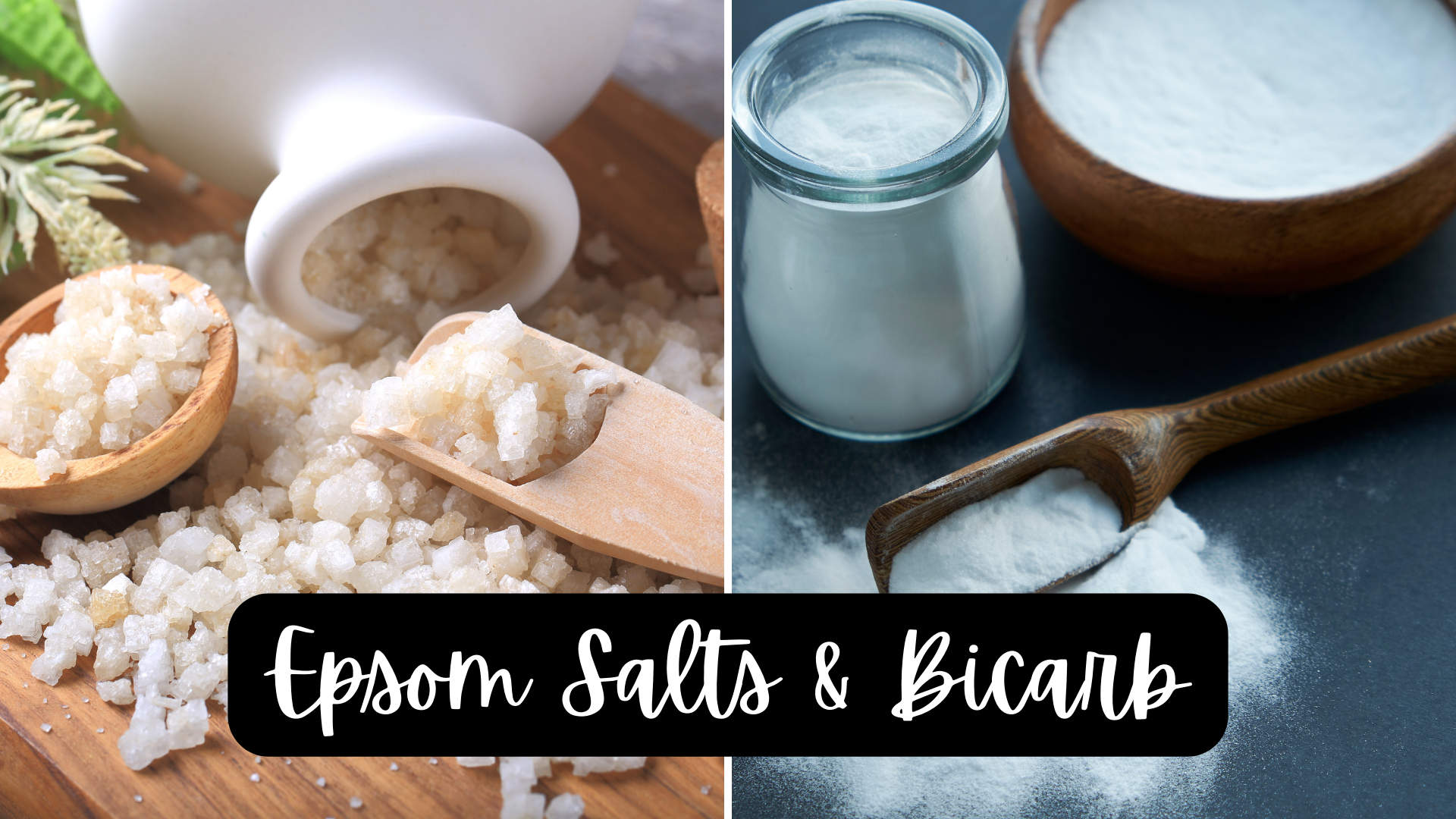While Epsom salt soaks are a commonly recommended remedy for treating clogged milk ducts, alternative methods and substitutes can effectively address this issue naturally and quickly.
Substitute for Epsom Salt for Clogged Milk Duct
If you don’t have Epsom salts and are looking for a quick substitute, bicarbonate of soda is a great option. Both Epsom salts and Bicab draw out impurities and toxins from the skin. Both are ionic compounds created by the bonding of two charged ions. The main advantage of an ionic substance is its ability to boost the body’s inherent detoxification processes, enabling the more efficient elimination of heavy metals and other harmful substances. It aids the body’s natural detoxification system.

Treating Plugged Ducts Naturally and Quickly
A plugged milk duct can be a painful and uncomfortable experience for breastfeeding mothers. When milk inside a duct dries up, it can obstruct the flow of milk, leading to engorgement, plugged ducts, stasis, and even mastitis. In this article, we will explore alternatives to Epsom Salts and provide insights into managing and preventing plugged ducts.
Symptoms of Plugged Milk Ducts
Before delving into alternative treatments, it’s essential to understand the symptoms of plugged milk ducts:
- A hard lump: Plugged ducts are often felt as a hard lump that may be hot and tender.
- Unilateral occurrence: They usually occur in one breast and progress gradually.
- Worsening before feeding: Pain and discomfort are typically more pronounced when the breast is full and tend to alleviate after a breastfeeding session.
- Painful nursing: Nursing on the side with the lump may be painful, especially during a letdown.
- No fever: Plugged ducts are generally not associated with fever. However, a temperature of more than 38.5°C may indicate mastitis.
- Temporary decrease in milk supply: Your milk supply may decrease temporarily.
- Thick, grainy milk: Some mothers may notice changes in the consistency of their milk.
- Bruising: Bruising in the affected area may persist for about a week after the lump disappears.
Treating Plugged Ducts Naturally and Quickly

#1. Remove as Much Milk as Possible.
Efficiently draining the breast is essential for treating plugged ducts.
Here’s what you can do:
- Frequent nursing and pumping: Nurse and pump frequently to keep the breast drained, even every two hours if necessary.
- Warm, moist compress: Applying a warm, moist compress before nursing or pumping can increase milk flow.
- Long breastfeeding sessions: Longer sessions can help ensure the breast is adequately drained.
- Start with the affected breast: Begin breastfeeding sessions with the plugged breast. If it’s too painful to achieve a letdown, start with the unaffected breast and switch sides once the letdown happens.
#2. Breast Massage
Breast massage can be highly effective in treating plugged ducts. Here’s how you can incorporate it into your routine:
- Before feeding: Massaging the breast before a feeding can soften it, making it easier for the baby to latch.
- During feeding: Apply movement and compression toward the nipple to help the baby remove as much milk as possible.
- After feeding: Continue to massage the breast and express milk manually or with a pump to reduce the risk of another blockage.

#3. The Way You Breastfeed
Optimizing your breastfeeding techniques can aid in treating plugged ducts:
- Dangle feeding: Experiment with different breastfeeding positions, including dangle feeding, which uses gravity to open blocked ducts.
- Chin or nose positioning: Position the baby’s chin or nose toward the affected area to promote drainage.
- Ensure a deep latch: Ensure your baby latches deeply to drain the breast effectively.
#4. Pain Relief
Managing pain is crucial, as it can impact the breastfeeding experience. Consider these options for pain relief:
- Cold compress: Apply a cold compress after feedings to alleviate pain.
- Over-the-counter pain relievers: Ibuprofen is safe while breastfeeding and can help reduce pain.
#5. Clear Blocked Pores
Unclogged pores can prevent blocked milk ducts. Washing your nipples with a washcloth can help open the pores. Other ways to open a pore…
- Epsom Salts or Baking Soda: Epsom salt baths are believed to have anti-inflammatory and softening properties due to their magnesium content. To use, soak your breasts in warm water with Epsom salts added. An alternative to Epsom salt is baking soda, which can help draw out impurities and toxins from the skin. Both Epsom salts and Bicab draw out impurities and toxins from the skin. Both of these compounds are formed through the connection of two charged ions. The primary benefit of an ionic substance lies in its ability to enhance the body’s natural detoxification processes, resulting in the removal of heavy metals and other detrimental substances.
#6. Sunflower Lecithin
Both soy and sunflower lecithin are effective in treating and preventing clogged ducts during breastfeeding. Sunflower lecithin, however, is often preferred due to its minimal chemical content and cold-pressed production method. It also contains more choline, manganese, magnesium, Vitamin B1, B6, Folate, and vitamin E compared to soy lecithin.

For recurring plugged ducts, a typical dosage is 3600 – 4800mg of Organic Sunflower Lecithin daily or 1200mg taken 3 to 4 times per day. The dosage can be reduced to 1200mg twice daily once blockages have subsided for two weeks and further reduced after four weeks of no blockages. Some mothers may need to continue with one or two dosages daily as a preventive measure.
Lecithin is also naturally found in various foods, including soybeans, whole grains, brussel sprouts, kidney beans, meat, and liver.
Most women experience relief within 24 – 48 hours of taking Lecithin.
Causes & Prevention of Plugged Ducts
Understanding the causes and taking preventative measures can reduce the risk of plugged ducts:
- Avoid tight bras and sleeping on your stomach: Restrictive clothing and sleeping positions can hinder milk flow.
- Hydration and nutrition: To reduce the risk of plugged ducts, ensure you stay well-hydrated and maintain a balanced diet.
- Gradual weaning: Avoid abrupt weaning, which can lead to plugged ducts. Gradual weaning is recommended.
- Oversupply: Mothers with oversupply issues are at higher risk.
- Nipple care: Address cracked or sore nipples quickly to prevent bacteria from entering the nipple.
- Avoid pacifiers and supplemental feedings: These can disrupt milk flow and increase the risk of plugged ducts.
- Low immune system and smoking: Both factors can contribute to plugged ducts and mastitis.
- Teething: Babies may refuse the breast during teething, leading to milk stasis and blockages.
- Previous breast surgery: Women with a history of breast surgery may be at increased risk.
- Untreated yeast infections: Addressing yeast infections promptly can help prevent breast inflammation and mastitis.
- Return to work: Mothers returning to work should ensure they regularly empty their breasts.
What About Mastitis?
While plugged ducts can usually be resolved within a couple of days, mothers should not ignore symptoms. Untreated plugged ducts can progress to mastitis, a breast infection. Continuing to breastfeed is crucial, as it can help clear the ducts.
Mastitis may be suspected if flu-like symptoms develop. Consult a healthcare provider if you experience a high fever.
Conclusion
In conclusion, addressing and preventing plugged ducts is crucial for a comfortable breastfeeding experience. By incorporating these natural remedies and taking preventive measures, you can manage plugged ducts effectively and continue to breastfeed with confidence. Remember that your healthcare provider and a lactation consultant can provide personalized advice based on your unique situation.


